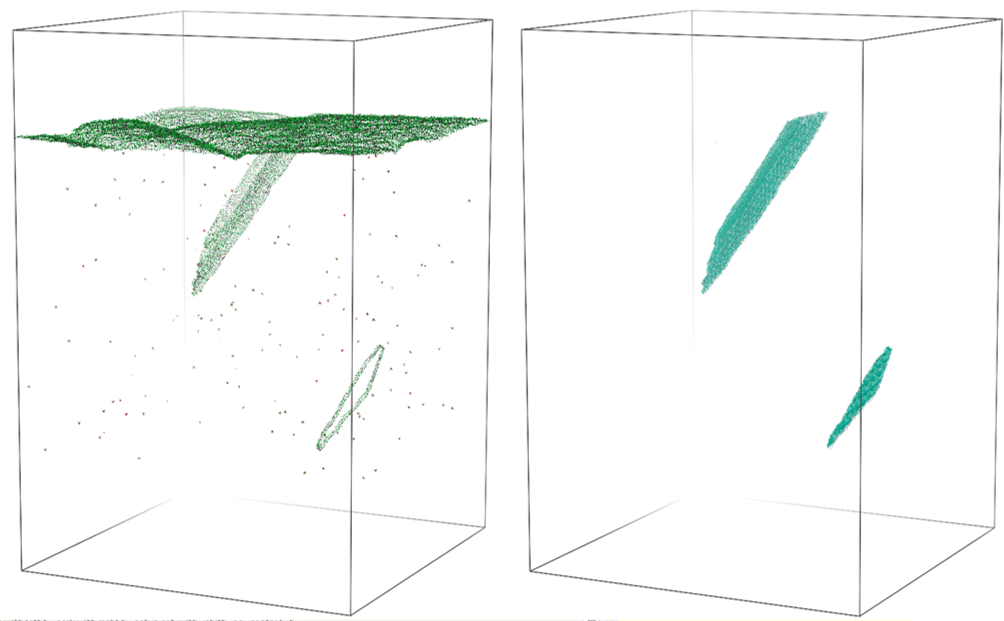
MulSKIPS is a Kinetic Monte Carlo super-Lattice code, designed to study with an atomic resolution the growth kinetics of elements, alloys and compounds characterized by the sp3 bond symmetry. Formalization and implementation details of the code are discussed in Ref. [1]. The code is open source and it is distributed according to the GNU public license [2].
Deposition and evaporation of the substrate atoms are the active Monte Carlo events, driving the stochastic evolution. In MulSKIPS, a dense super-lattice correctly accommodates the original lattice of the ideal crystal along with a large class of defective configurations [1,2,3]. This feature makes the code unique in the range of lattice Kinetic Monte Carlo codes currently available for sp3 materials. Indeed, the code is able to simulate the evolution of both point and extended defects, like stacking faults of different symmetries, antiphase boundaries and grain boundaries. Moreover, MulSKIPS can simulate the morphological evolution during the growth process, e.g. the epitaxial growth or etching of flat, structured, or patterned substrates, as well as nanoparticles of various shapes. In the case of surfaces, periodic boundary conditions are applied in the planes orthogonal to the growth direction.
As a representative case study, we report a MulSKIPS simulation for the epitaxial growth of 3C-SiC substrates exposing the (001) surface (the z axis of the Cartesian system lies along the [001] direction) [3]. Extended defect generation can be studied by MulSKIPS when initial substrate preparation assists their formation (e.g. the presence of faceting, nanostructures or non-ideal bonding like antiphase boundaries). In Figure 1 an example of multiple staking fault generation is reported.
References:
[1] A. L. Magna et al., Simulation of the Growth Kinetics in Group IV Compound Semiconductors, physica status solidi (a) vol. 216, no. 10, p. 1800597, 2019, doi: 10.1002/pssa.201800597
[2] See code web page at github: https://github.com/MulSKIPS/MulSKIPS where a user manual and regression tests for developers can be additionally downloaded
[3] G. Fisicaro et al., Genesis and Evolution of Extended Defects: The Rrole of Evolving Interface Instabilities in Cubic SiC, Applied Physics Reviews vol. 7, no. 2, p. 021402, Apr. 2020, doi: 10.1063/1.5132300
 Modeling Unconventional Nanoscaled Device FABrication
Modeling Unconventional Nanoscaled Device FABrication